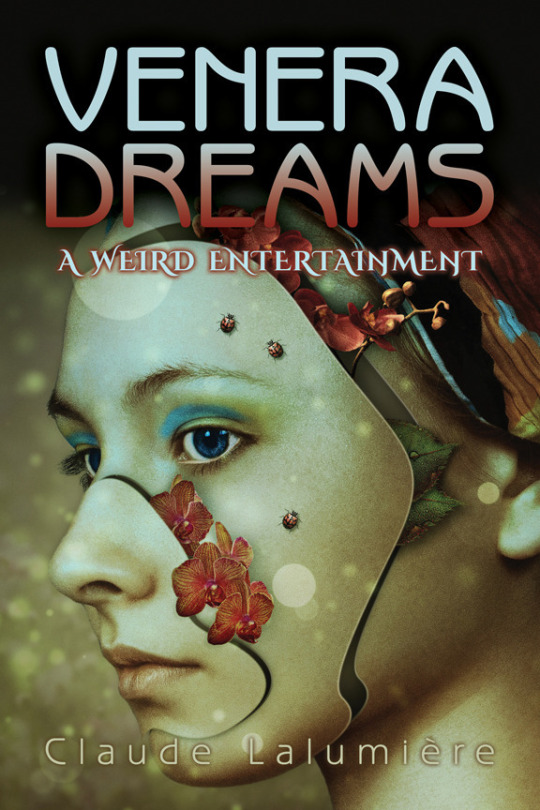Tachyon tidbits featuring Jo Walton, Nalo Hopkinson, Andrew Fox, and Claude Lalumière
The latest reviews and mentions of Tachyon titles and authors from around the web.

Jo Walton, Nalo Hopkinson (photo: David Findlay), Andrew Fox, and Claude Lalumière (Alexandra Renwick)
Jo Walton discusses STARLINGS and other things with Sonali Karnick on CBC’s All in a Weekend Montreal.
The award winning Montreal fantasy & sci fi author talks about why she found writing short stories so much more difficult than writing her 13 novels to date.

LOCUS reports that Nalo Hopkinson received the 2018 Octavia E. Butler Memorial Award.
Nalo Hopkinson received the 2018 Octavia E. Butler Memorial Award from Cal State Los Angeles in a ceremony during Eagle-Con, held March 8, 2018 at the University-Student Union of the Cal State campus in Los Angeles CA. The award “is given in recognition of impactful contributions to the world of science fiction, fantasy and speculative fiction, with the spirit and conviction demonstrated by multi-award winning author and Cal State LA alumna Octavia E. Butler.”
In their discussion of Andrew Fox books, BOOK SERIES IN ORDER recommends THE GOOD HUMOR MAN.
Not a part of any series, this works as a stand-alone, as it would be one of the earlier novels from Andrew Fox, and it is a definite must for any fans of the author. Showing where he has come from, it not only provides readers with an insight into his development as a writer, but it also provides a fun and entertaining view on contemporary issues of food within society.

This would take its inspiration and lead from such satirical writers as Ray Bradbury with his novel ‘Fahrenheit 451’, which was obviously the template for much of this novel. Taking it forwards, it really excels at shining a light on certain issues currently faced within society, whilst managing it all with good grace and humor. Set in a fantastical science-fictional world that’s not far removed from this one, it really works at what it’s trying to achieve, allowing the reader to gain a fresh and interesting new perspective on the issues presented within.
At BLACK GATE, Matthew David Surridge praises Claude Lalumière’s Venera Dreams.
The subtitle of Venera Dreams proclaims the collection “A Weird Entertainment,” and that’s accurate in just about every sense. It is strange and it is entertaining. But it’s weird in a more profound way; weird in the way of the pulps, in the way of Weird Tales. And it is an entertainment in the way the first English version of the One Thousand And One Nights called itself The Arabian Nights’ Entertainment. It’s a series of reveries about storytelling and art, about ecstasy and myth, about cities and history and yearning. About Venera the venerable: about venery and veneration

Stylistically, the book varies considerably from tale to tale, sometimes tragic and sometimes comic and overall yearning and aspiring to the sublime. There is a precision of language, and also a striving to describe things that are indescribable — the language reaching to describe not only what a thing is, but the connotations and associations of the thing. That’s done through physical detail, through taste and scent and touch as well as sight and sound. This is a sensual book, and the language is specific in detail to match that. But as it is also a weird entertainment, so accordingly the language is also rich and evocative. It’s a book that’s full of allusiveness, which works to create a dreamlike sense in which everything has a latent extra meaning. I would imagine some readers might find some allusions distracting, as occasionally one feels that a reference is being made to some real-world artist in a coded way, leaving a nagging sense of incompleteness if one does not have the key to the code. Personally I found that incompleteness itself added to the feel of the book and of the city; I found that even when I was able to see the references, the book’s act of making an allusion had an effect beyond the literal reference of the allusion itself. In any event Lalumière describes his characters with a free hand, including details of their sexuality and dreams and deaths, whether they’re based on a real-world figure or not.
Crucially, Venera Dreams never feels like pastiche. It wears its influences on its sleeve, but uses those influences to create something distinctive. If there is a lot of pulp here, in structural terms that’s mainly obvious in a strong sense of plot. Different stories use very different approaches, often finding experimental forms to present characters inspired by classic adventure fiction; in particular, the central and longest story of the book, “Agents of the Vermilion Eye,” begins as a mystery involving a group of nineteenth-century action heroes but swiftly becomes something very different, a series of visions crossing space and especially time. Like a dream, story elements that seem familiar or even well-worn become reinvested with strangeness and significance.
For more info on STARLINGS, visit the Tachyon page.
Cover design by Elizabeth Story
For more info on THE GOOD HUMOR MAN, visit the Tachyon page.
Cover by Ann Monn
